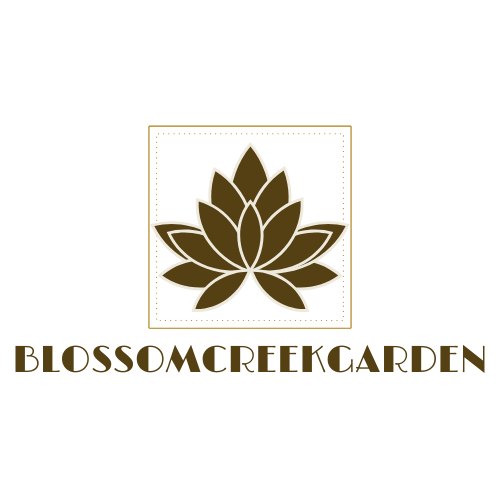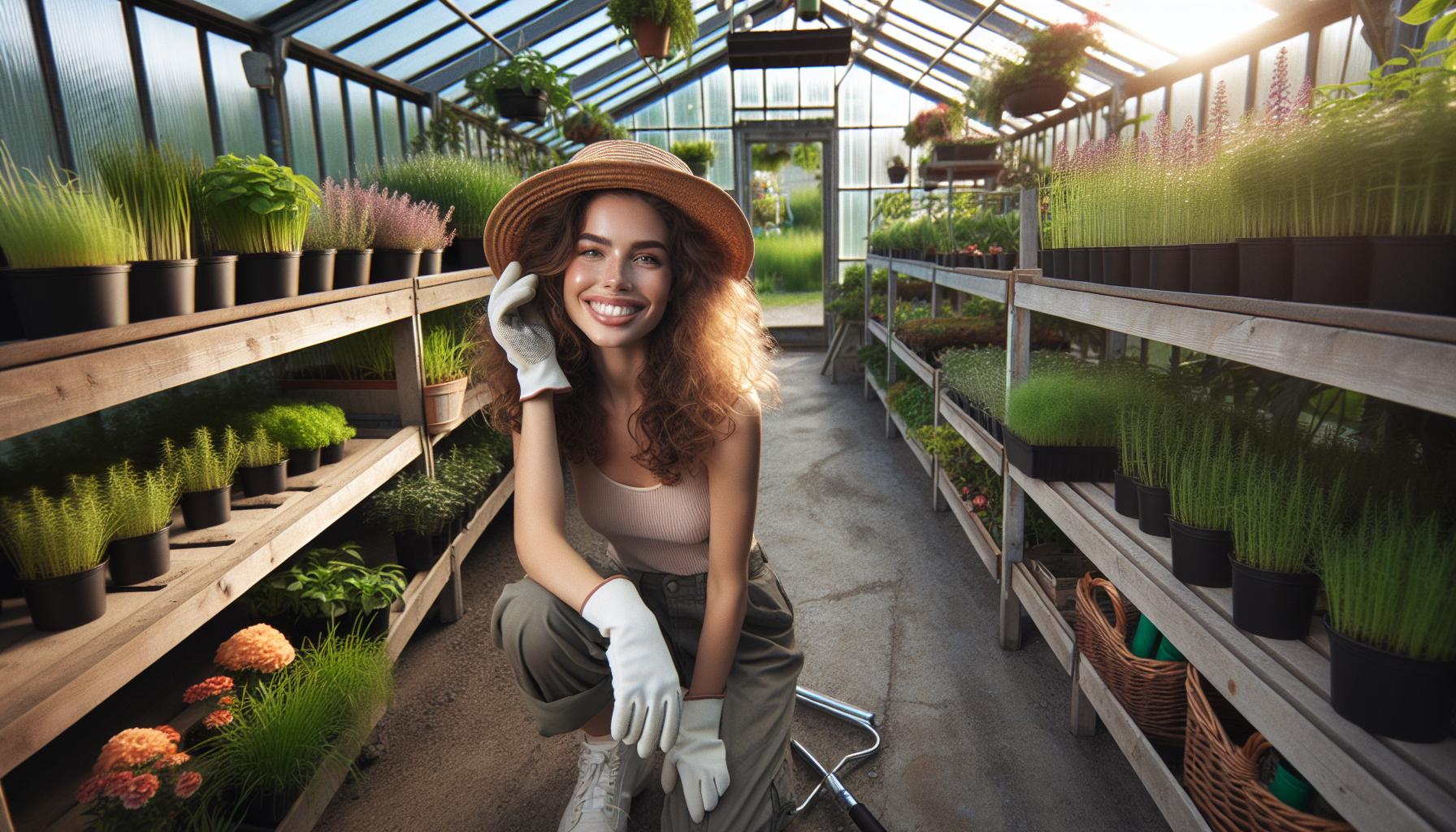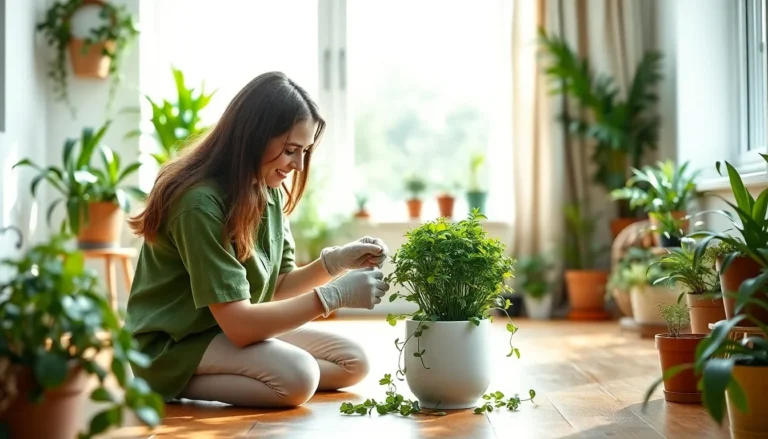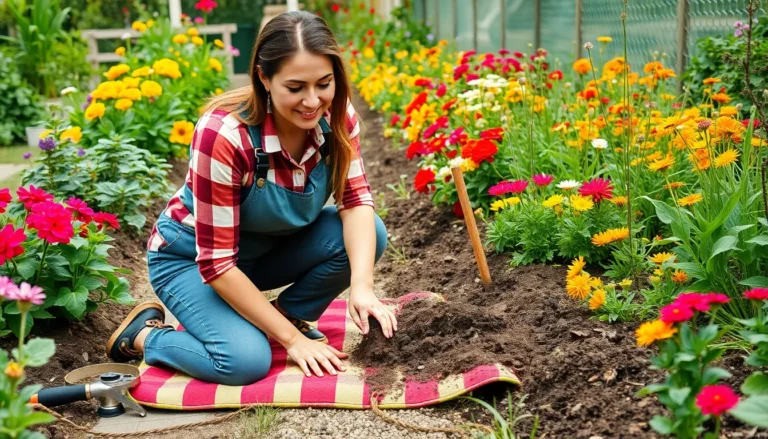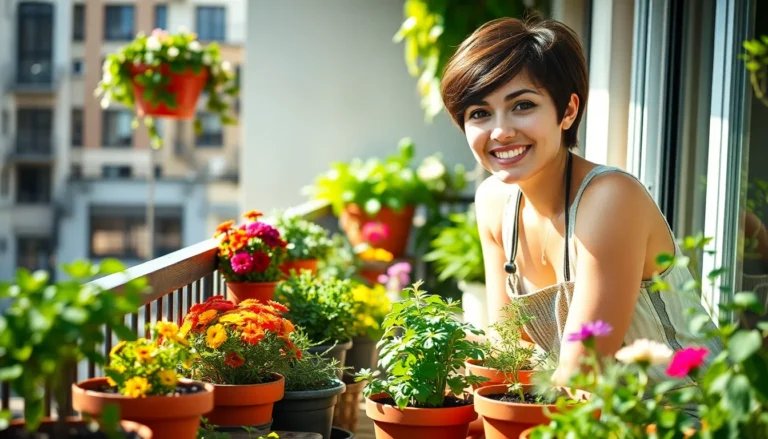I’ve discovered that greenhouse gardening opens up a whole new world of growing possibilities. As a beginner I started with a small greenhouse in my backyard and it completely transformed my gardening experience. Now I can grow plants year-round regardless of outdoor conditions.
Starting greenhouse gardening might seem overwhelming but I promise it’s easier than you think. A greenhouse creates a controlled environment that protects your plants from harsh weather extreme temperatures and unwanted pests. Whether you’re interested in growing vegetables fresh herbs or exotic flowers a greenhouse gives you the perfect environment to nurture your plants and extend your growing season.
Key Takeaways
- Greenhouse gardening extends growing seasons and protects plants from harsh weather conditions, enabling year-round cultivation of various plants regardless of outdoor climate
- Essential greenhouse equipment includes a sturdy frame with proper covering (glass or polycarbonate), climate control systems (thermometer, ventilation, fans), and appropriate shelving units for optimal growing space
- Proper greenhouse location requires 6-8 hours of daily sunlight (south/southeast facing), adequate drainage, and protection from strong winds while maintaining proper ventilation
- Beginner-friendly plants like leafy greens, herbs, cherry tomatoes, and bush beans thrive in greenhouse environments and can be harvested within 30-70 days
- Successful greenhouse gardening requires maintaining optimal temperature (65-75°F), humidity (50-70%), and regular maintenance routines including daily monitoring and seasonal preparations
Benefits of Starting a Greenhouse Garden
A greenhouse garden creates an optimal growing environment by providing multiple advantages for plant cultivation. Here’s how my greenhouse has enhanced my gardening experience.
Protection From Weather and Pests
My greenhouse acts as a protective shield against harsh environmental conditions. The enclosed structure blocks damaging winds gales spray rain hail sleet snow. The covering material filters harmful UV rays while maintaining ideal light levels for photosynthesis. I’ve noticed a significant reduction in pest problems since moving my plants into the greenhouse, as the controlled environment prevents common garden pests like aphids caterpillars slugs from accessing the crops.
| Season | Regular Garden | Greenhouse Garden |
|---|---|---|
| Spring | Mid-May start | March start |
| Summer | June-August | May-September |
| Fall | Sept harvest | November harvest |
| Winter | Dormant | Cold-hardy crops |
Essential Greenhouse Equipment and Materials
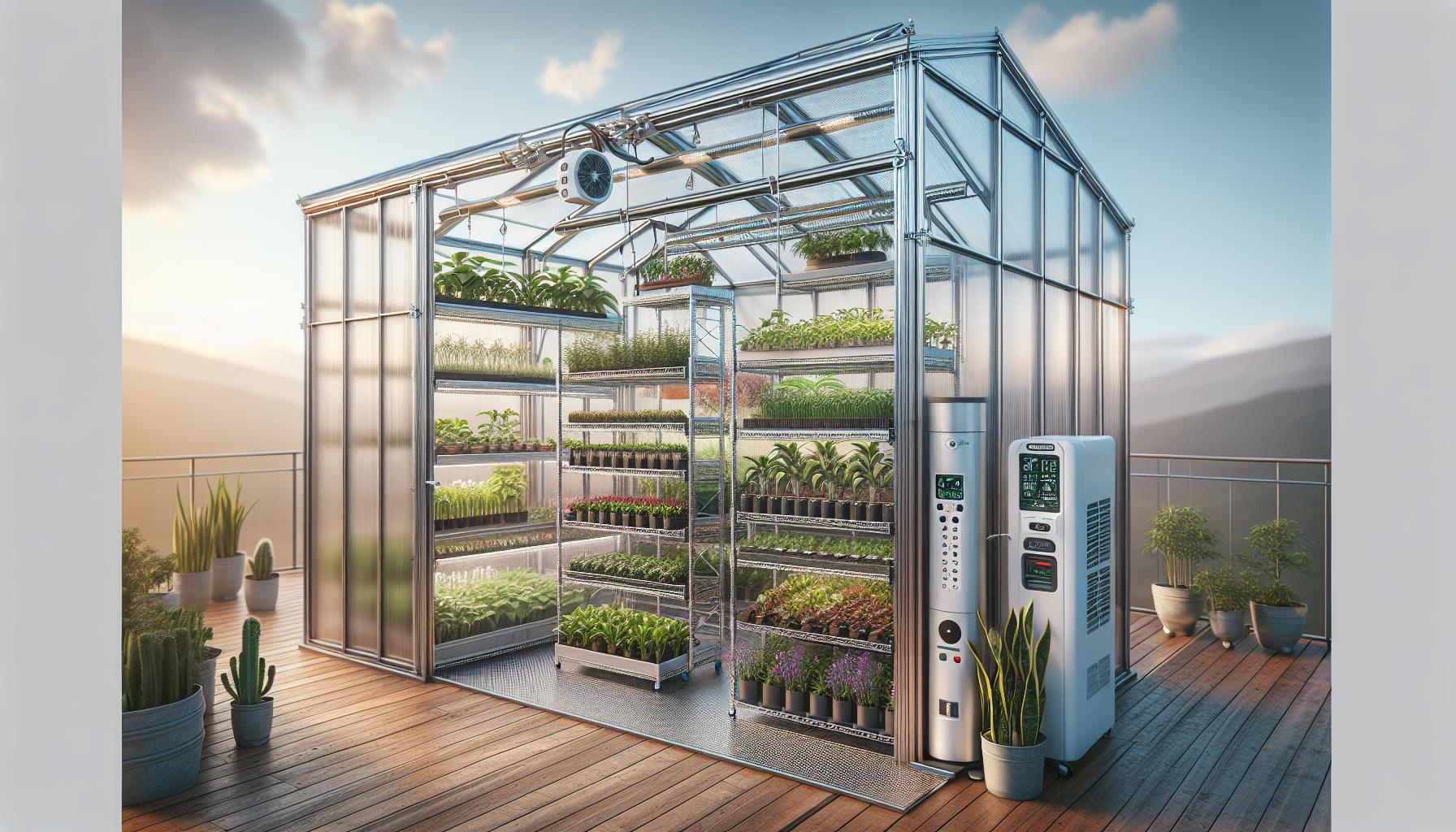
After setting up my greenhouse, I discovered that having the right equipment and materials significantly impacts growing success. Here’s what I’ve found essential for an efficient greenhouse setup.
Basic Structure Options
The foundation of my greenhouse starts with a sturdy frame made from aluminum or galvanized steel, covered with either glass or polycarbonate panels. I opted for a 6mm twin-wall polycarbonate covering due to its:
- Excellent insulation properties with an R-value of 1.54
- 85% light transmission rate for optimal plant growth
- Impact resistance that’s 200 times stronger than glass
- 10-15 year lifespan with proper maintenance
Climate Control Systems
My climate control setup maintains optimal growing conditions through these essential components:
- Thermometer/hygrometer combination unit to monitor temperature (65-75°F) and humidity (50-70%)
- 2-3 automatic vent openers placed strategically in the roof
- Solar-powered circulation fan running at 2-3 cubic feet per minute
- Shade cloth rated at 40-50% light reduction for summer months
- Electric heater (1500W) for winter temperature maintenance
- 4-tier metal wire shelving units (48″W x 18″D x 72″H)
- UV-resistant plastic containers in various sizes:
- 1-gallon pots for herbs
- 3-gallon containers for vegetables
- 5-gallon buckets for larger plants
- Hanging baskets with 12-16 inch diameters
- Raised beds (4’x2′) with 12-inch depth for root crops
Choosing the Perfect Location
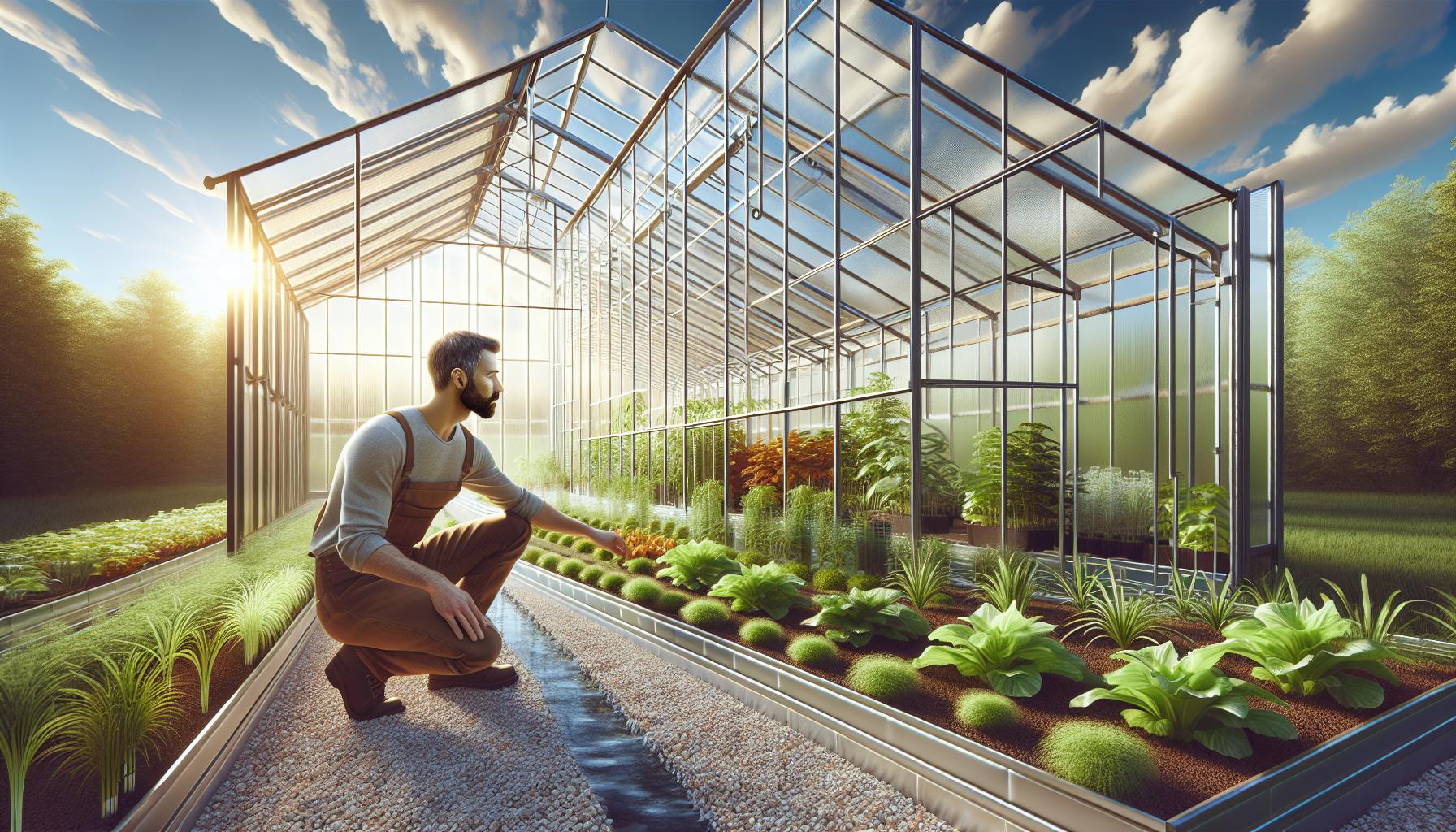
Selecting an optimal location for a greenhouse maximizes growing success through proper environmental conditions. I’ve learned that careful placement affects temperature control energy costs plant growth.
Sun Exposure Requirements
My greenhouse receives 6-8 hours of direct sunlight daily during winter months by facing the glazing south/southeast. East-facing locations capture morning sun while avoiding intense afternoon heat. Here’s the optimal sun exposure by season:
| Season | Hours of Direct Sun | Best Orientation |
|---|---|---|
| Winter | 6-8 hours | South/Southeast |
| Spring/Fall | 8-10 hours | East/Southeast |
| Summer | 10-12 hours | East with shade cloth |
Wind and Drainage Considerations
I positioned my greenhouse 15 feet away from tall structures to prevent damaging wind tunnels between buildings. The key drainage factors include:
- Installing 4-inch gravel beds beneath the foundation for water dispersal
- Creating a 2% slope away from the structure for proper runoff
- Placing French drains 6 feet from the perimeter to redirect heavy rainfall
- Elevating the greenhouse floor 4 inches above ground level using concrete blocks
- Setting up gutters to collect rainwater in storage tanks for irrigation
- Using windbreak plants like arborvitae 20 feet from the structure
- Installing stake anchors at each corner extending 24 inches into the ground
- Reinforcing door latches with heavy-duty hasps rated for 50mph winds
- Adding corner bracing to the frame for enhanced structural stability
- Maintaining 3-foot clearance around vents for proper air circulation
Starting Your First Greenhouse Plants
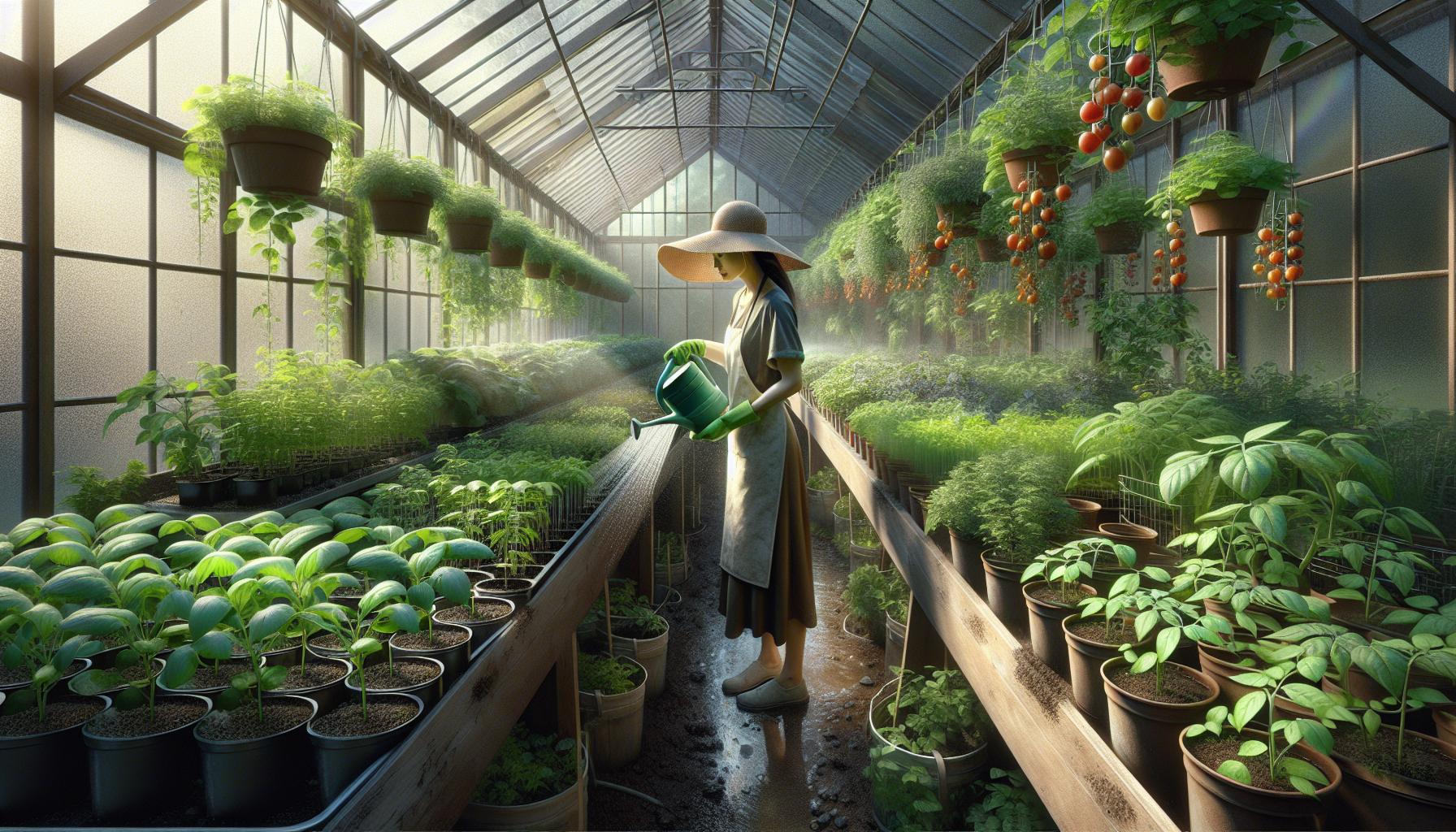
I’ve learned that starting plants in a greenhouse requires selecting the right varieties and using proper techniques. After establishing my greenhouse setup, these methods have consistently produced healthy, vigorous plants.
Best Plants for Beginners
These easy-to-grow plants thrive in greenhouse conditions with minimal maintenance:
- Leafy Greens: Lettuce, spinach, kale grow from seed to harvest in 30-45 days
- Herbs: Basil, mint, parsley adapt well to container growing
- Cherry Tomatoes: Compact varieties like ‘Tiny Tim’ produce fruit in 65 days
- Bush Beans: ‘Provider’ or ‘Blue Lake’ varieties yield crops in 50-60 days
- Radishes: Quick-growing crop ready to harvest in 21-28 days
| Plant Type | Days to Harvest | Temperature Range |
|---|---|---|
| Leafy Greens | 30-45 days | 60-70°F |
| Herbs | 40-50 days | 65-70°F |
| Cherry Tomatoes | 65-70 days | 65-80°F |
| Bush Beans | 50-60 days | 65-75°F |
| Radishes | 21-28 days | 55-70°F |
- Container Selection
- Use 4-inch pots for herbs
- Select 6-inch containers for leafy greens
- Choose 12-inch pots for tomatoes beans
- Soil Preparation
- Fill containers with sterile potting mix
- Leave 1-inch space at top for watering
- Pre-moisten soil before planting
- Seed Starting
- Plant seeds at 2-3x their diameter depth
- Space seeds according to packet instructions
- Label containers with plant name date
- Initial Care
- Maintain soil temperature at 65-75°F
- Water gently with spray bottle
- Place containers in bright indirect light
Managing Your Greenhouse Environment
I maintain optimal growing conditions in my greenhouse through careful monitoring and adjustment of key environmental factors. Here’s how I manage each essential component for healthy plant growth.
Temperature Control Tips
My greenhouse stays at ideal temperatures through a combination of heating and cooling methods. I use a min-max thermometer to track temperature fluctuations, keeping daytime temperatures between 70-80°F (21-27°C) and nighttime temperatures above 55°F (13°C). Here’s my temperature management system:
- Open vents at 75°F (24°C) to release excess heat
- Install shade cloth from March to October to reduce solar gain
- Place thermal mass (water-filled containers) near plants to stabilize temperatures
- Run an electric heater with thermostat control during cold nights
- Position plants based on their temperature needs – heat-loving plants up high, cool-season crops down low
Humidity and Ventilation Basics
I maintain 50-70% relative humidity through proper air circulation and moisture control. My ventilation strategy includes:
- Run 2 circulating fans continuously for air movement
- Open side vents in morning hours to exchange stale air
- Use automatic vent openers tied to temperature sensors
- Add humidity trays filled with pebbles under plant benches
- Monitor humidity levels with a digital hygrometer
- Increase ventilation when condensation appears on walls
- Water deeply in morning hours to allow foliage to dry
- Use drip irrigation system with timer controls
- Check soil moisture 1 inch deep before watering
- Group plants with similar water needs together
- Apply water directly to soil, avoiding wet leaves
- Collect rainwater in 55-gallon barrels for irrigation
- Install capillary matting under seed trays for even moisture
Common Greenhouse Maintenance Tasks
I’ve developed a systematic approach to greenhouse maintenance through years of experience, focusing on essential tasks that keep my plants thriving. My maintenance schedule includes both daily monitoring and seasonal preparations to ensure optimal growing conditions.
Daily and Weekly Routines
I complete these fundamental tasks to maintain my greenhouse:
- Check temperature readings 3 times daily (morning, afternoon, evening)
- Monitor soil moisture in containers each morning
- Water plants before 10 AM based on individual needs
- Remove yellowed or dead leaves during morning inspections
- Sweep floors weekly to prevent pest habitation
- Check ventilation systems daily for proper operation
- Record temperature/humidity data in a monitoring log
- Inspect plants for signs of disease or pests twice weekly
- Clean glass/polycarbonate panels monthly for maximum light
- Test soil pH levels every 2 weeks
Seasonal Preparations
Each season requires specific maintenance tasks:
Spring:
- Clean all surfaces with a 10% bleach solution
- Replace damaged panels or seals
- Test irrigation systems
- Add fresh growing medium to containers
- Install shade cloth for summer readiness
Summer:
- Check cooling systems weekly
- Clean fans and vents monthly
- Adjust ventilation settings for peak temperatures
- Monitor humidity levels twice daily
- Maintain shade cloth position
Fall:
- Remove shade cloth
- Clean gutters and drainage systems
- Check heater functionality
- Seal any drafts around windows/doors
- Install bubble wrap insulation if needed
- Monitor heating system daily
- Clear snow from roof within 24 hours
- Check structural integrity monthly
- Maintain minimum temperature of 45°F
- Clean condensation from walls weekly
Conclusion
Starting my greenhouse gardening journey has been one of the most rewarding experiences in my gardening life. I’ve seen firsthand how a well-maintained greenhouse can transform a regular garden into a year-round growing paradise.
Whether you’re a novice gardener or an experienced green thumb looking to expand your growing possibilities I believe greenhouse gardening is worth the initial investment. With proper planning the right equipment and consistent maintenance you’ll create an ideal environment for your plants to thrive.
Remember that success in greenhouse gardening comes from patience and learning from experience. I encourage you to take that first step – your future harvests will thank you.
